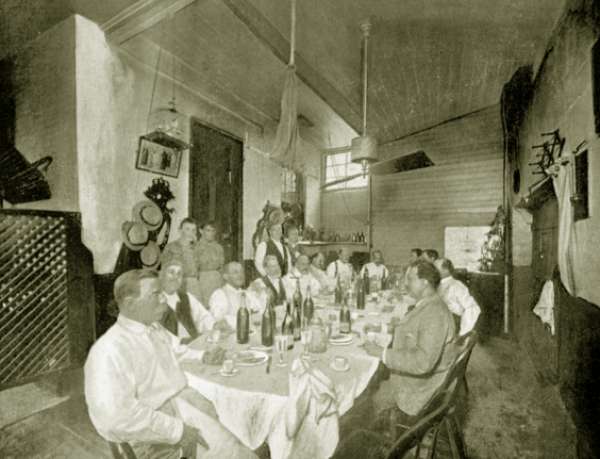Slow Cooked Beef Stew
Beth Ribblett
The cold weather and the 2010 Duseigneur Antares Lirac had me craving some sort of hearty meat dish so I took out a piece of round steak from the freezer, one of the few cuts we have left from that 1/4 of a cow we bought last year. Avoiding the dreaded Whole Foods run on a Sunday, I was able to scrounge up enough ingredients to make a beef stew in the crock pot.
Last month's Food & Wine had a photo of a slow cooked beef dish on its cover that has been calling to me every I look at it. And while I made my own version, wanting something hearty and tasty with very little work involved, Jacques Pepin's Beef Stew in Red Wine Sauce was definitely my inspiration!
Ingredients
2 lbs round steak cut into 1"-2"chunks
2 t. kosher salt
1/2 t. fresh ground pepper
1/2 C. chopped onion
10 cipollino onions
10 small carrots, peeled
4 cloves garlic, smashed
1 t. dried thyme
2 bay leaves
3 sprigs of fresh rosemary
2 t. Worchestire Sauce
2 C. red wine
2 C. organic beef broth
1/4 t. pepperoncino
1/3 C. flour mixed with warm water
chopped parsley for garnish
directions
-Add all of the ingredients except for the parsley into the slow cooker and turn on high for 4-1/2 hours.
-At 4 hours, open the Duseigneur to let it breath and pour yourself a glass while you make some brown rice. Turn the temperature on the slow cooker down to low for another 1/2 hour.
-Open the pot and ladle out most of the liquid into a pot on the stove. Heat to a low boil and add the flour/water mixture to make the gravy. Once it comes to a boil again, turn down to a simmer to thicken for about 5 minutes. Add back into the slow cooker and mix into the meat and veggies.
-Ladle some of the delicious stew over a bit of brown rice. Butter yourself a nice toasty thick piece of whole grain bread, pour yourself another glass of wine and relax over a nice Sunday evening meal!
Last month's Food & Wine had a photo of a slow cooked beef dish on its cover that has been calling to me every I look at it. And while I made my own version, wanting something hearty and tasty with very little work involved, Jacques Pepin's Beef Stew in Red Wine Sauce was definitely my inspiration!
Ingredients
2 lbs round steak cut into 1"-2"chunks
2 t. kosher salt
 |
| ready to put the lid on and wait... |
1/2 C. chopped onion
10 cipollino onions
10 small carrots, peeled
4 cloves garlic, smashed
1 t. dried thyme
2 bay leaves
3 sprigs of fresh rosemary
2 t. Worchestire Sauce
2 C. red wine
2 C. organic beef broth
1/4 t. pepperoncino
1/3 C. flour mixed with warm water
chopped parsley for garnish
directions
-Add all of the ingredients except for the parsley into the slow cooker and turn on high for 4-1/2 hours.
-At 4 hours, open the Duseigneur to let it breath and pour yourself a glass while you make some brown rice. Turn the temperature on the slow cooker down to low for another 1/2 hour.
-Open the pot and ladle out most of the liquid into a pot on the stove. Heat to a low boil and add the flour/water mixture to make the gravy. Once it comes to a boil again, turn down to a simmer to thicken for about 5 minutes. Add back into the slow cooker and mix into the meat and veggies.
-Ladle some of the delicious stew over a bit of brown rice. Butter yourself a nice toasty thick piece of whole grain bread, pour yourself another glass of wine and relax over a nice Sunday evening meal!

















